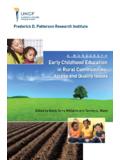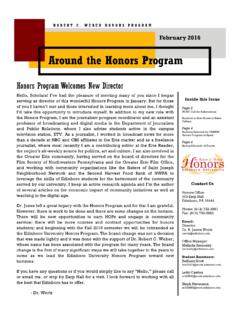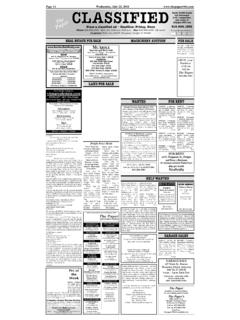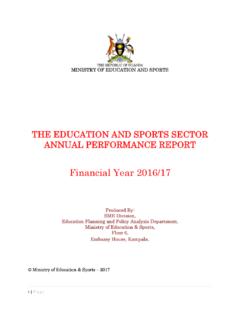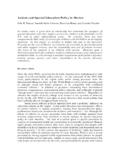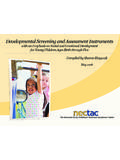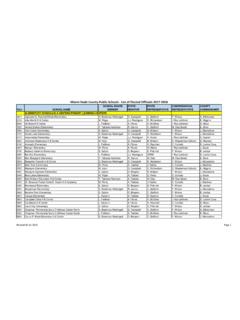Transcription of New York State EARLY LEARNING GUIDELINES
1 New York State EARLY LEARNING GUIDELINESNew York Works forbuilding knowledgebuilding careersbuilding futuresCopyright 2012 by the New York State EARLY Childhood Advisory Council and the New York State Council on Children and Families, 52 Washington Street, West Building, Suite 99, Rensselaer, New York, 12144. Permission to copy all or portions of this document is granted provided that: (1) the New York State EARLY Childhood Advisory Council and Council on Children and Families are acknowledged as the source in any reproduction, quotation or use; and (2) any charge for the document shall be no more than the reasonable cost to copy and distribute.
2 New York Works forbuilding knowledgebuilding careersbuilding futuresNew York Works for Children is the State s integrated, coordinated, cross-sector workforce development system. It has been built to serve public agencies and all professionals who work with and/or on behalf of children, and includes teachers, leaders, teacher educators and professional development providers, advocates and policy-makers, and any others engaged in the efforts to elevate the Teacher s View EarlyChildhoodAdvisoryCouncil BuildingSuccessfor ChildrenEnsuringSuccessforNewYork Dear Colleagues.
3 It is our pleasure to bring this publication to you in support of your practice with or on behalf of New York s young children and their families. The EARLY Childhood Advisory Council (ECAC) is committed to realizing the vision that all young children are healthy, LEARNING , and thriving in families that are supported by a full complement of services and resources essential for successful development. We see the publication, dissemination, and implementation of the New York State EARLY LEARNING GUIDELINES as a critical step in moving closer to the ECAC s vision.
4 In order to do the work we each do for young children, we need to truly understand children. We need to know how they develop and we need to embrace all the strategies to support, encourage, and affirm their healthy development. We need to be adept at explaining child development to families and help them understand our role, as partners, in the growth and development of their children. The best professionals are always LEARNING and developing their skills. The EARLY LEARNING GUIDELINES are designed to be used as a daily reference and resource, to support the professional development of those responsible for the care and education of our youngest citizens.
5 Over your years of using the GUIDELINES , as you deepen your understanding of how children develop, you will continue to learn how to respond to their readiness for new interactions, experiences, activities, and challenges and your teaching will mature. You will also develop the depth and capacity to teach others about the dynamics involved in the excellence of teaching. The GUIDELINES were designed to complement and coordinate with the State s Pre-Kindergarten Foundation for the Common Core, the Head Start Child Development and LEARNING Framework and the New York State LEARNING Standards, to reinforce the developmental continuum.
6 These documents are companions to the NYS Core Body of Knowledge and the NYS Teaching Standards. We are fortunate to have a framework in New York State that acknowledges that LEARNING begins at birth and continues throughout one s lifetime! Robert G. Frawley Sherry M. Cleary ECAC Co-chair ECAC Co-Chair 52 Washington Street,Suite 99We stRensselaer,NY12144 ,Co-ChairNYSC ouncilonChildrenandFamilies SherryM. Cleary,Co-ChairNewYorkEarlyChildhood ProfessionalDevelopmentInstituteTable of ContentsThe Teacher s View 1 How to Use the EARLY LEARNING GUIDELINES Successfully The Decisions You Make 2 How the GUIDELINES Can Support Your Teaching Practice 6 How the GUIDELINES Can Support You 14 Obstacles to Using the GUIDELINES 14 Getting Started 15An Introduction to the GUIDELINES 16 Acknowledgments 21 Domain I 23 Physical Well-Being, Health, and Motor Development A.
7 Gross Motor Skills 26B. Fine Motor Skills 27C. Sensorimotor Skills 28D. Physical Fitness: Daily Activities 29E. Physical Fitness: Variety and Well-Being 30F. Daily Living Skills 31G. Daily Living Skills: Hygiene 32H. Nutrition 33I. Safe Practices 34J. Rules and Self-Regulation 35 Domain II 37 Social and Emotional Development A. Interactions with Adults 39B. Interactions with Adults: Children seek assistance from adults 40C. Interaction with Peers 41D. Interaction with Peers: Cooperation 42E. Interaction with Peers: Negotiation 43F.
8 Adaptive Social Behavior 44G. Adaptive Social Behavior: Group Activities 45H. Adaptive Social Behavior: Diverse Settings 46I. Adaptive Social Behavior: Empathy 47J. Appreciating Diversity 48K. Self-Concept 49L. Self-Concept: Abilities and Preferences 50M. Self-Efficacy 51N. Self-Control 52O. Self-Control: Feelings and Impulses 53P. Emotional Expression 54 Domain III 57 Approaches To LearningA. Curiosity and Interest 59B. Initiative 60C. Persistence and Attentiveness 61D. Creativity and Inventiveness 62E. Reflection and Interpretation 63 Domain IV 65 Cognition and General KnowledgeA.
9 Causation: Children demonstrate awareness of cause and effect 68B. Critical and Analytic Thinking: Children compare, contrast, examine, and evaluate experiences, tasks, and events 69 NYS EARLY LEARNING GUIDELINEST able of Contentsi NYS EARLY LEARNING GUIDELINESThe Teacher s ViewTable of ContentsiiC. Critical and Analytic Thinking: Children use past knowledge to build new knowledge 70D. Problem-Solving: Children find multiple solutions to questions, tasks, problems, and challenges 71E. Representational Thought: Children use symbols to represent objects 72F.
10 Representational Thought: Children distinguish between fantasy and reality 73G. Number and Sense Operations: Children demonstrate knowledge of numbers and counting 74H. Measurement: Children demonstrate knowledge of size, volume, height, weight, and length 75I. Properties of Ordering: Children identify and label shapes 76J. Properties of Ordering: Children sort, classify, and organize objects 77K. Scientific Thinking: Children collect information through observation and manipulation 78L. Scientific thinking: Children engage in exploring the natural world by manipulating objects, asking questions, making predictions, and developing generalizations 79M.
